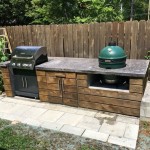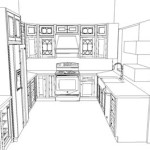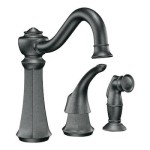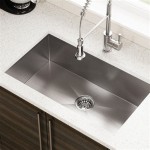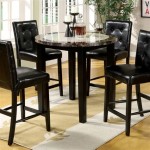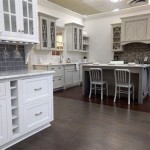Kitchen Casement Windows Over Sinks: Functionality and Design Considerations
The placement of a window above the kitchen sink is a common design element, providing natural light and ventilation to a frequently used area. Among the various window styles, the casement window has emerged as a popular choice for this location due to its unique operational characteristics and aesthetic appeal. This article will explore the benefits and considerations involved in incorporating a casement window above a kitchen sink, examining its functionality, design implications, and practical aspects of implementation.
Casement windows are characterized by their hinged construction, opening outward from the side like a door. This design distinguishes them from other window types, such as double-hung or sliding windows, offering distinct advantages in terms of ventilation and outward visibility. When strategically positioned above a kitchen sink, a casement window can significantly enhance the user experience and overall functionality of the kitchen space.
Enhanced Ventilation and Airflow
One of the primary advantages of a casement window above a kitchen sink is its ability to maximize ventilation. The outward swinging sash allows the window to capture breezes from a wider angle compared to other window types. This is particularly beneficial in kitchens, where cooking odors, steam, and humidity can accumulate. The open casement window effectively channels airflow, promoting air circulation and reducing the build-up of unwanted smells and moisture. This improved ventilation contributes to a healthier and more comfortable kitchen environment.
The operational mechanism of a casement window also allows for adjustable airflow. By varying the angle of the open sash, the homeowner can control the amount of air entering the kitchen. This level of control is especially useful in different weather conditions. On a breezy day, a partially opened window provides gentle ventilation, while a fully opened window maximizes airflow on warmer days. This adaptability ensures that the kitchen remains well-ventilated without being uncomfortably drafty.
Furthermore, the tight seal provided by a closed casement window offers energy efficiency. When properly installed and maintained, a casement window creates an airtight barrier against drafts and air leaks. This seal helps to regulate the kitchen's temperature, reducing energy consumption for heating and cooling. In contrast, older or poorly sealed window types may allow for significant air infiltration, leading to higher energy bills and reduced comfort.
Optimized Natural Light and Visibility
In addition to ventilation, casement windows positioned above a kitchen sink excel at maximizing natural light. The unobstructed glass pane allows for ample sunlight to illuminate the workspace, reducing the need for artificial lighting during the day. This is particularly advantageous in kitchens, where good lighting is essential for food preparation, cleaning, and other tasks. The natural light enhances visibility, making these activities safer and more efficient.
The uninterrupted expanse of glass also provides a clear view of the outdoors. This visual connection with the surrounding environment can enhance the overall ambiance of the kitchen, creating a more pleasant and inviting space. Looking out the window while performing mundane kitchen tasks, such as washing dishes, can alleviate boredom and provide a sense of connection with nature. The increased visibility also improves security, allowing the homeowner to monitor outdoor activity.
Considering the placement of the casement window in relation to the direction of sunlight is crucial. A south-facing window will receive the most direct sunlight throughout the day, potentially leading to glare and overheating during the summer months. An east-facing window will receive morning sunlight, while a west-facing window will receive afternoon sunlight. A north-facing window will receive the least direct sunlight, providing consistent, diffused light throughout the day. The optimal orientation depends on the homeowner's preferences and the specific needs of the kitchen space.
Design and Practical Considerations
Integrating a casement window above a kitchen sink requires careful consideration of several design and practical factors. The size and placement of the window should be proportionate to the sink and surrounding cabinetry. A window that is too large may overwhelm the space, while a window that is too small may not provide adequate light or ventilation. The height of the window should also be considered, ensuring that it is easily accessible for cleaning and operation.
The choice of window materials is also an important factor. Casement windows are available in a variety of materials, including wood, vinyl, aluminum, and fiberglass. Each material has its own advantages and disadvantages in terms of durability, maintenance, and cost. Wood windows offer a classic and elegant look, but require regular maintenance to prevent rot and decay. Vinyl windows are low-maintenance and energy-efficient, but may not be as aesthetically appealing as wood windows. Aluminum windows are durable and corrosion-resistant, but can be prone to condensation. Fiberglass windows offer a good combination of durability, energy efficiency, and aesthetic appeal.
Hardware selection is crucial for the functionality and longevity of the casement window. High-quality hinges, handles, and locking mechanisms ensure smooth and reliable operation. The handle should be easily accessible and comfortable to grip, especially if the sink is deep. The locking mechanism should provide a secure seal when the window is closed, preventing drafts and unauthorized entry. Choosing corrosion-resistant hardware is essential for windows exposed to moisture and humidity in the kitchen environment.
The type of glass used in the casement window also impacts its performance. Double-pane glass is recommended for energy efficiency, providing insulation against heat and cold. Low-E (low-emissivity) coatings can further enhance energy efficiency by reducing heat transfer. Tinted glass can help to reduce glare and heat gain from direct sunlight. Tempered glass is required for windows located near a sink, providing safety in case of breakage. Tempered glass shatters into small, blunt pieces, reducing the risk of injury.
Cleaning a casement window above a kitchen sink can present a challenge due to its location and the potential presence of a backsplash. Choosing a window with an easy-to-clean design and readily accessible hardware is essential. Some casement windows feature hinges that allow the sash to swing inward for easier cleaning from inside the kitchen. Regular cleaning is necessary to maintain the window's appearance and prevent the build-up of dirt and grime. Using a mild detergent and a soft cloth is recommended to avoid damaging the glass or hardware.
Finally, the overall aesthetic of the casement window should complement the style of the kitchen. The window frame and hardware should be chosen to match the cabinetry, countertops, and other design elements. A well-integrated casement window enhances the visual appeal of the kitchen, creating a cohesive and harmonious space. The window can serve as a focal point, drawing attention to the natural light and outdoor views.
Addressing Potential Challenges and Solutions
While casement windows offer numerous advantages, certain challenges may arise when installing them above a kitchen sink. One common issue is interference with the faucet or other sink fixtures. Careful planning and precise measurements are essential to ensure that the window does not obstruct the faucet or any other components of the sink. Selecting a faucet with a low profile or repositioning the faucet can help to avoid interference.
Another potential challenge is the difficulty of reaching the window to open and close it, especially for individuals with limited mobility. Installing an extended handle or a remote control opening mechanism can address this issue. These solutions make the window more accessible and easier to operate, regardless of the user's physical abilities.
Condensation can also be a problem, particularly in kitchens with high humidity levels. Proper ventilation is crucial to minimize condensation. Running the exhaust fan while cooking and opening the casement window periodically can help to remove excess moisture from the air. Using a dehumidifier can also be beneficial in reducing humidity levels. Additionally, selecting windows with thermally broken frames and insulated glass can help to prevent condensation from forming on the window surface.
Insect screens are essential for keeping insects and other pests out of the kitchen while still allowing for ventilation. Choosing a screen that is easy to install and remove for cleaning is important. Some casement windows come with integrated insect screens that are permanently attached to the window frame. These screens are convenient and provide continuous protection against insects.
In summary, installing a casement window above a kitchen sink can be a worthwhile investment, providing enhanced ventilation, optimized natural light, and improved aesthetics. Careful consideration of the design and practical aspects, along with addressing potential challenges, ensures a successful and functional integration of this window style into the kitchen space.

Types Of Kitchen Windows Pella

Kitchen Sink Windows Woodland Doors

Push Out Kitchen Casement Windows Design Ideas

Best Kitchen Sink Windows For Dmv Homes Quality Window Door

Kitchen Casement Windows Design Ideas

Types Of Kitchen Windows Marvin Replacement

Kitchen Window Over Sink

Kitchen Sink Windows Woodland Doors

Best Kitchen Windows For Over The Sink Onesource

34 Kitchen Windows Over Sink Ideas For The Perfect View

